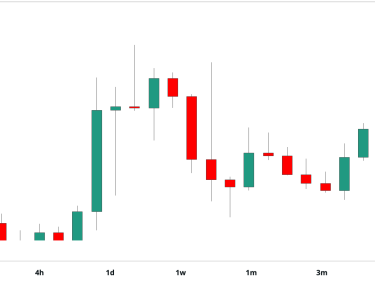BTC’s implied volatility index, DVOL, has recently declined, maintaining a positive correlation with the cryptocurrency’s price.
Stock and bond market volatility indices, VIX and MOVE, have ticked higher amid risk aversion.
A continued rise in MOVE may weigh over bitcoin, one analyst said.
Bitcoin’s (BTC) price has recently corrected after weeks of unstoppable rally, tracking weakness in U.S. stocks and bonds.
BTC’s pullback again stands out, exhibiting little fear or panic compared to stocks and bond markets, where expected or implied volatility indices, often called fear gauges, witnessed notable spikes.
Bitcoin’s price has declined by 7% this month. Still, crypto exchange Deribit’s BTC DVOL index, an options-based measure of expected price volatility over the next 30 days, has decreased from 75% to 70% on an annualized basis. That’s an extension of the pullback from March highs at around 80%, according to data from TradingView.
In other words, despite the price drop, there has been little panic buying of put options or derivatives offering downside protection, which is usually the case in traditional markets. Implied volatility is influenced by demand for options.
Meanwhile, the Chicago Board Options Exchange’s CBOE Volatility Index (VIX), a measure of expected price turbulence over four weeks, has significantly increased from an annualized 13% to 19%. The index is based on options tied to the S&P 500 index, which has experienced a 5.4% decline this month.
The MOVE index, which measures expected volatility in U.S. Treasury notes, has increased from 94% to 111% alongside a decline in bond prices (and an uptick in yields).
The diverging trend in the BTC DVOL does not necessarily mean bitcoin is seen as a relatively safe asset and is a bull market feature. BTC’s implied volatility has been positively correlated with its price since 2023.
“Bitcoin, in this bull market is still very much in a positive spot/vol correlation regime. With the potential parabolic moves to the upside, BTC vol picks up as price starts to rally and softens as we sell off,” David Brickell, head of international distribution at Toronto-based crypto platform FRNT Financial, said.
“Tradfi risk skew is still very much to the downside as the sell offs are typically sharper than the slower grinding rallies,” Brickell added.
BTC’s unusual implied volatility profile means traders may be better off taking bullish implied volatility bets during price rallies than during market swoons.
Bitcoin bulls anticipating a resumption of the uptrend might want to watch out for a continued rise in the MOVE index.
That’s because heightened volatility in U.S. Treasury notes, which dominate global collateral and securities and finance, often leads to tighter financial conditions and investor risk aversion.
“Treasuries are often the collateral that are used by markets to borrow and gain leverage to trade in stocks and other riskier investments,” the founders of newsletter service LondonCryptoClub said in Monday’s edition.
“When bond volatility spikes, then a greater haircut is applied to that collateral, meaning less leverage is able to be taken against it, which means reduced liquidity in the system. Alongside the strengthening dollar, this has been a squeeze on stocks and also on bitcoin,” the founders added.
11:46 UTC: Updated VIX value. The previous version erroneously mentioned VVIX value.




